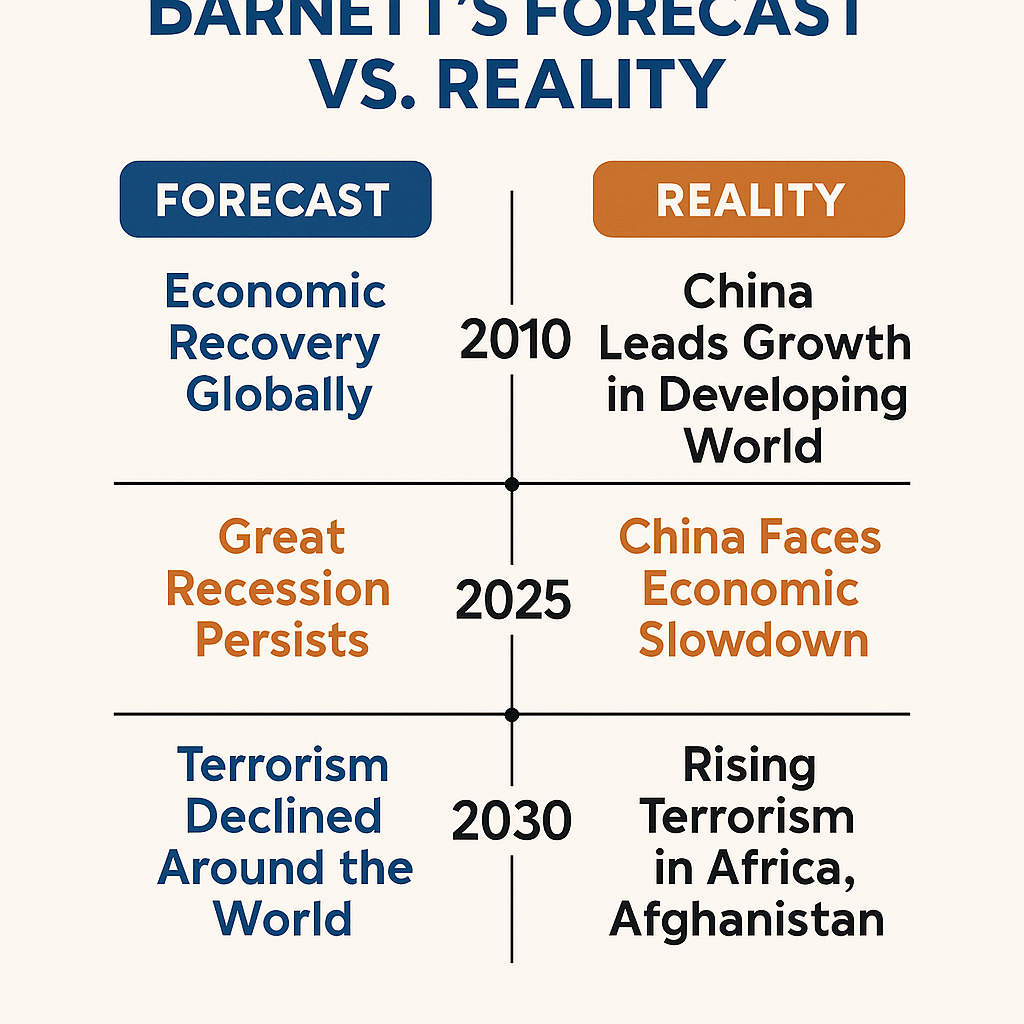I. Barnett’s Core Argument
Thomas Barnett argued around 2011–2012 that America was fundamentally shifting its global security posture:
- From Atlantic to Pacific Focus:
Historically, American military and economic interests were Atlantic-centric (Europe, Middle East). But as the 21st century unfolded, a pivot toward the Pacific (East Asia) became necessary because the “old world” (Europe, Middle East) was increasingly unmanageable and less economically vital compared to the dynamism of Asia. - Exporting Security:
The U.S. wasn’t abandoning the world; it was still a major exporter of security. But the form was changing: fewer boots on the ground (think Iraq and Afghanistan), more arms sales (to Gulf States and Asian allies), and eventually, more drones, robotics, and cyber capabilities. - Global Arms Races:
Two containment strategies were simultaneously running:- Iran containment (via Gulf allies)
- China containment (via Asian allies)
- Africa and Middle East:
As America pulled back, Barnett forecast that China would gradually expand into Africa and the Middle East — first with economic ties, then military presence. - Rise of Populism:
Barnett saw a wave of global populism fueled by economic dissatisfaction, loss of identity, and lack of leadership — predicting it would demand a progressive era of reforms across nations.
II. How It Has Unfolded (2012–2025)
Barnett’s vision has mostly come true, with a few major developments:
1. The U.S. Pivot to Asia Accelerated
- Obama’s “Pivot to Asia” policy (2012) started this, but it deepened under Trump’s trade war with China and Biden’s Indo-Pacific Strategy.
- Military alliances like AUKUS (Australia, UK, US) were formed to counter China in the Pacific.
- Arms sales exploded to Japan, South Korea, Taiwan, India, Philippines.
2. China’s Expanding Influence
- Belt and Road Initiative (BRI) has spread Chinese investment across Africa, Latin America, and the Middle East.
- Chinese military bases in Djibouti (East Africa) and growing naval presence in the Indian Ocean and Pacific.
- China’s influence in the UN, WHO, and regional blocs (BRICS, SCO) has expanded dramatically.
3. Russia’s Role
- Russia didn’t become a superpower contender — exactly as Barnett predicted. Instead, it focused on regional power status (Ukraine war, Syria) but was bogged down economically and demographically.
4. India’s Rise
- India’s demographic advantage (young, large workforce) positioned it as the primary future challenger to China in Asia.
- U.S. has embraced India as a strategic partner (QUAD alliance: US, Australia, Japan, India).
5. Decline of Europe and Japan
- Europe, while economically powerful, continues to decline militarily and demographically.
- Japan remains stable but has aging demographics and limited military reach.
6. Populism and Progressive Movements
- Across Europe, Asia, and America, populist leaders have surged — driven by economic grievances and immigration issues.
- Barnett foresaw the anger, but we are still waiting for a coherent Progressive Era of smart reforms globally.
III. The U.S., China, and India: The New “Triangle of Power”
Barnett identified that three players would dominate:
| Nation | Strengths | Challenges |
|---|---|---|
| U.S. | Battle-tested, resilient economy, innovative. | Political polarization, debt, trust issues. |
| China | Manufacturing powerhouse, state control. | Aging demographics, real estate collapse, growing isolation. |
| India | Demographics, tech services, young workforce. | Infrastructure deficits, political instability. |
Today, in 2025, the world is increasingly shaped by how these three powers interact — in competition, rivalry, and cooperation.
IV. Barnett’s Warnings and Prescriptions
Barnett warned about:
- The danger of staying mired in the Middle East while China quietly expands.
- The stupidity of alienating India instead of aligning with it.
- The insanity of draining American military without rethinking priorities.
He prescribed:
- Pull back from land wars (Middle East).
- Shift to offshore balancing: smarter diplomacy, arms sales, alliances.
- Let China take more “responsibility” in messy regions (Africa, Middle East).
- Contain China economically and diplomatically, not through constant military provocation.
- Focus on keeping America internally strong through reforms — political, social, and economic — to weather the coming 2030s competition.
V. Today’s Reality Check: 2025
| Vision of Barnett (2011) | Reality in 2025 |
|---|---|
| Shift from Atlantic to Pacific | Mostly achieved. |
| Greater arms sales | Achieved (biggest exporter still US). |
| Robotics and drones dominance | Achieved. |
| China’s global economic expansion | Achieved but slowing post-COVID and debt crisis. |
| Rise of populism and anger | Achieved and still rising. |
| Need for Progressive reforms | Not yet achieved — political gridlock still reigns. |
| India’s demographic advantage | Clearly unfolding. |
Conclusion: The Future Barnett Predicted is Here — But the Outcome Depends on Smart Reform
Barnett correctly saw the tectonic changes coming — America’s pivot, China’s ambitions, India’s emergence, populist anger.
But what is not yet clear is whether America and other great powers will reform themselves wisely in time to avoid war, chaos, and collapse.
As Barnett stressed: “Bodies matter.”
In a world of aging populations and shrinking militaries, those who innovate, reform, and build trust faster will lead.
If we fail?
The collapse will not be “big wars,” but endless “small wars” and instability.
If we succeed?
A new stable world order could emerge in the 2030s–2040s — led not by domination but by smart cooperation among the U.S., India, and a reformed China.







